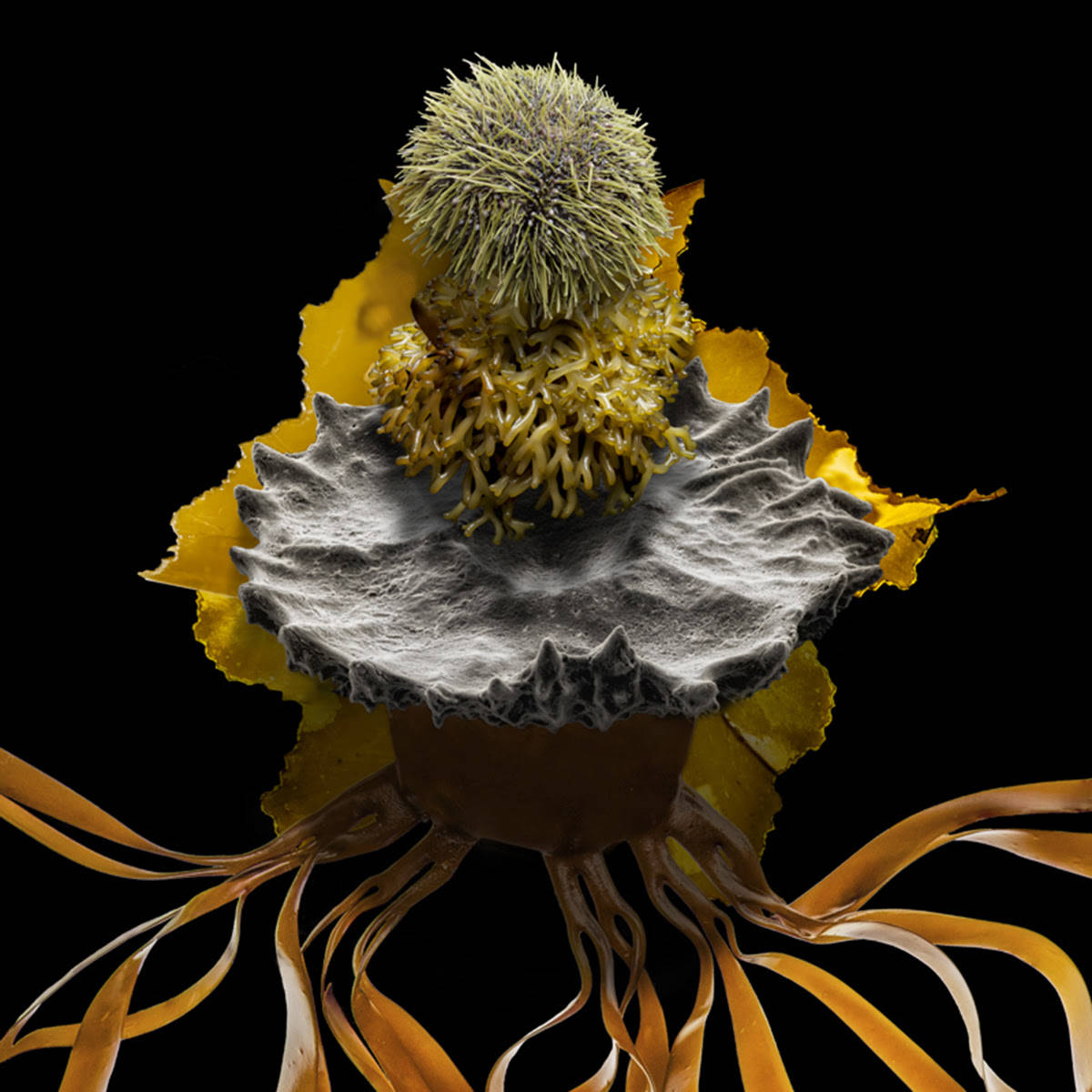by Robert Dash
Originally published in Friday Harbor Lab’s TideBites
I’ve always had a fascination with how art and science intersect. My undergraduate studies focused on natural history, environmental studies and education. Teaching became my career, where I continued to promote interdisciplinary, thematic studies. Outside of work, during the past 10 years, in particular, I’ve leant much attention to developing my photographic eye.
A recurring challenge has been: how to visualize complex ideas (the beauty of textures and patterns, climate change impacts, metaphor and fact) in the confines of a single image? I settled on photomontage, where I create a surreal conversation between the life-sized version of an object and microscopic parts of itself.
Five years ago I was thrilled to learn the art of scanning electron microscopy under the direction of Dr. Adam Summers at Friday Harbor Labs. I’m an educator, naturalist and photographer who had a long-standing dream to produce a book about my interests. I began working on this book, “On an Acre Shy of Eternity / Micro Landscapes at the Edge,” exploring all the layers of beauty that I could find on the 3/4 acre Orcas Island property where my partner – artist Ranna McNeil – and I settled in 2014. During that project, I became intrigued by the possibility of using a scanning electron microscope to go beyond what I could see with my macro and telephoto lenses. Adam very generously took the time to orient me to the workings of the JCL Neoscope 5000, and from the first image I was hooked.
Both my technique and my focus have evolved to produce Food for Thought. Of particular importance was the addition of focus stacking and panorama stitching to both micrographs and macro photographs. This involved a tedious practice of making and combining, at times, hundreds of individual images to produce one final study of a seed, pollen grain, algal blade, or leaf. These techniques allowed me to present objects in ways that vastly improved on what the SEM or camera could normally reveal. This also greatly increases the file size, allowing images to remain sharp even when enlarged to exhibition size.
Over the past year and a half, I’ve explored the stories and visual impacts of hundreds of foods. I’m drawn to foods with spectacular textures, patterns and shapes, and those with a significant story related to climate change. I employ photomontage to blend SEM micrographs of pollen, seeds, leaves and other elements with macro photography images. Combining these scales in one image embraces a new visual language, with metaphor, fact, humor, story, surrealism and environmental commentary. My hope is that these images will stir imaginations, provoke ideas and questions, and connect people more intimately to the world they help shape.
The process of exploring these foods has given me a great appreciation for the power of plants, microbes, mushrooms, and healthy soils to repair what we have broken. Do we have sense enough to notice and to do all that we can to collaborate with them?
Ranna and I are avid snorkelers, and one of our favorite cliffs showed a marked increase in green urchins this past summer. Given the importance of kelp to the Salish Sea ecosystem and the implications of seastar wasting disease on urchin predators, this was a valuable topic to pursue. The fact that both urchins and kelp are eaten by people gave that an added level of relevancy for my Food for Thought exhibition. Among other items, this image combines a micrograph of the green urchin tube foot (“platter”), bull kelp holdfast and kelp blades with urchin teeth marks.V
Visit Dash’s Food for Thought exhibit at the San Juan Island Museum of Art until Dec. 9.



